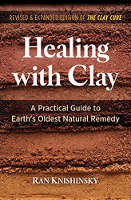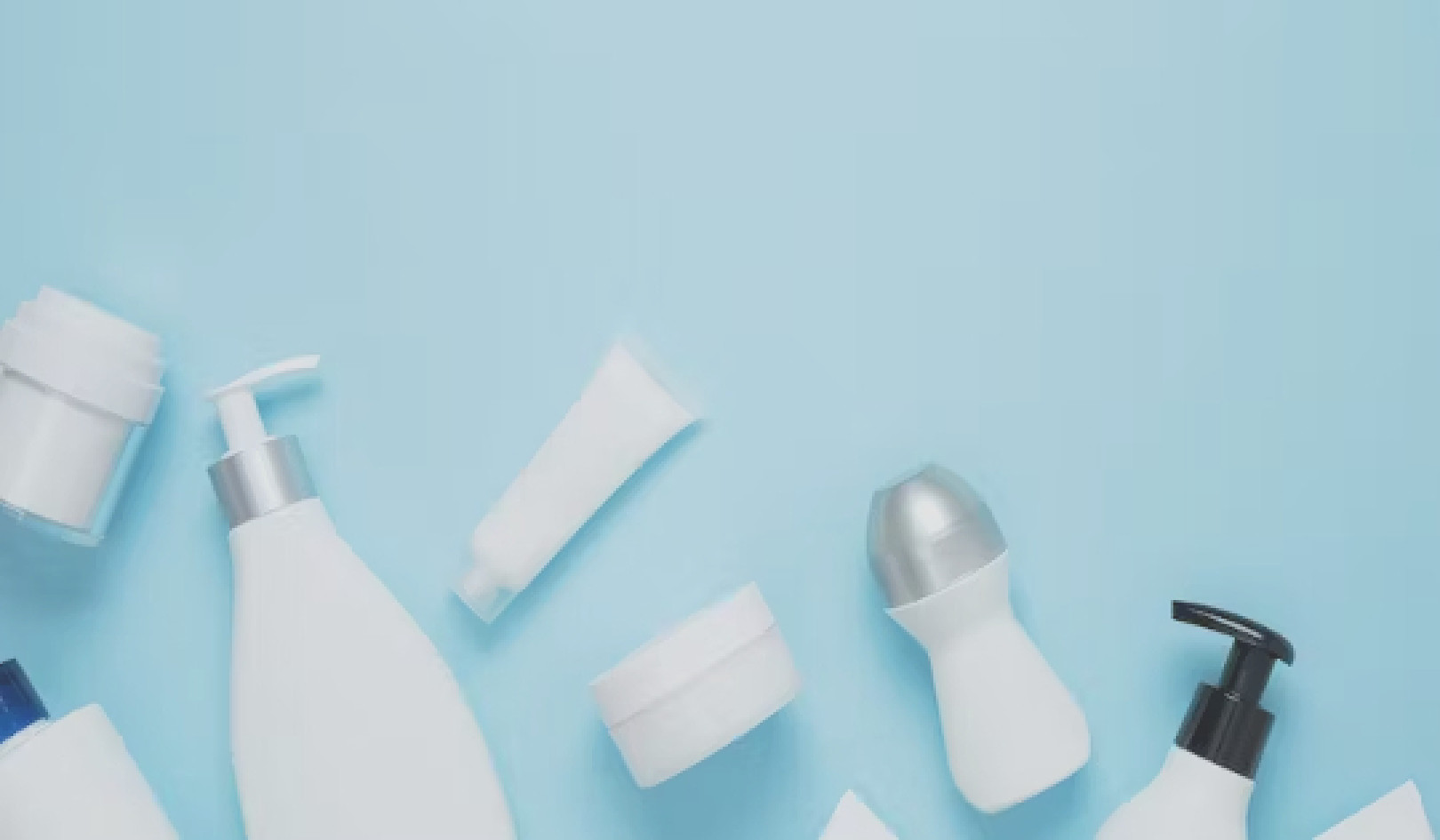
Image by Iris Hamelmann
If purpose, then, is inherent in art, so is it in Nature also. The best illustration is the case of a man being his own physician, for Nature is like that—agent and patient at once. -- Aristotle, Physics
The most conclusive evidence for the healthful effects of clay points to protection and detoxification as its primary benefit. There are numerous research reports, articles, ethnomedicine anecdotes and even clinical studies that corroborate this.
When The Clay Cure was first published back in the late 1990s it was based on the premise that clay is ingested around the world as a detoxicant. More than two decades later, additional scientific research continues to support the use of clay as an agent of protection and an excellent detoxicant.
Everything Is Toxic!
This headline is really meant to be an attention grabber. But the statement is actually quite true!
It is only the dose that separates the toxic from the non-toxic. Even water can be toxic if a large amount is consumed in a relatively short period of time. Like water, antioxidant vitamin A can be too much of a good thing and lead to acute toxic effects.
There are a number of items that we eat on a daily basis that are natural and contain toxins. Examples of this include selenium in grain, methyl mercury in seafood, hypericin in the herb St. John’s wort (which I wrote an entire book about called The Prozac Alternative, dedicated to the utilization of this medicine as a treatment for natural relief from depression and anxiety), cucurbitacins in zucchini, grayanotoxins in honey, and glycoalkaloids (solanine and chaconine) in potatoes. Pretty much anything in this paragraph that is hard to pronounce is a toxin.
You might be surprised to learn that these toxins exist in the natural foods you eat. After all, vegetarianism and veganism are promoted as a safe and healthy alternative to consuming meat products. So why would plants suddenly be toxic?
Plants can’t protect themselves by running away from their prey, so nature has invented other means as tactics of self-defense. These include the development of thorns as modified leaves, and sticky resins. It also includes toxic chemicals produced by plants to protect themselves from the insects and animals that seek to eat them. Think about this the next time you eat an ear of corn at Uncle Joe’s barbeque house!
Mold and bacteria also produce toxic, harmful chemicals. Mycotoxins,such as the highly carcinogenic aflatoxin, are produced by fungi. Some bacteria produce enterotoxins, which are poisons that help these bacteria to efficiently colonize the gut, causing cramping, vomiting, nausea, and diarrhea. Even the fried foods you eat, and the ones grilled at high temperatures, contain harmful chemical compounds.
Most of us get along fine each and every day despite our consumption of these toxins. However, these compounds produced by plants, as well as pathogens like bacteria that can produce disease, are capable of causing bodily distress. In lower quantities, these toxins can manifest in gastrointestinal pain, dizziness, and muscle aches and pains. In higher amounts, they can cause cancer and cell mutations, affect fetal development, and even lead to death. We are barraged by these toxins on a daily basis. Clay may be the natural supplement to protect us from this toxin onslaught.
Other toxins that clay may protect against include bacteria such as E. coli and Staphylococcus, as well as more scary, lethal infections like botulism, salmonella, and listeriosis. You can be exposed to E. coli, for example, through contaminated water or food—especially raw vegetables and undercooked meat.
In the past several years we have witnessed E. coli scares in contaminated romaine lettuce, causing hundreds of thousands of pounds of produce to be pulled from grocery aisles and destroyed. Symptoms include diarrhea, which may range from mild and watery to severe and bloody. In healthy persons, diarrhea might just be an annoyance. But in children and persons with compromised immune systems, it can very serious, even deadly.
Other pathogens that clay can be helpful against are dangerous waterborne bacteria, viruses, and parasitic nematodes, which are roundworms that live in agricultural soil and fresh and saltwater.
What Are Mycotoxins and Aflatoxins?
Mycotoxins are important enough to merit some detailed discussion. They are toxic secondary metabolites produced by fungus and have been the subject of some of the clinical studies conducted with clay. It’s a somewhat complicated sounding name for a group of toxins, but basically they can be called fungal poisons.
First discovered in 1962, these little guys can cause a wide range of health concerns in humans who are exposed to small amounts over an extended period of time. They can be lethal if taken in large quantities over a short period of time. Believe it or not, grains can be a source of mycotoxins.
“Grains are sources of carbohydrates, or sugars, and as such, they risk contamination by certain fungi. These fungi produce secondary metabolites, or mycotoxins,” according to David Straus, a professor of microbiology and immunology at Texas Tech University Health Sciences Center.
In fact, if you consume grains, or grain-fed animal products, there is an excellent chance you are already being exposed. Mold infestation and mycotoxin contamination affects as much as one-quarter of the global food and feed supply. The American Food and Agriculture Organization estimates that 25 percent of the food crops in the world are affected by mycotoxins.
Do I Have Your Attention Yet?
Aflatoxins(pronounced a-fluh-tok-sins), according to the World Health Organization, are among the most poisonous mycotoxins and are produced by certain molds (Aspergillus flavus and Aspergillus parasiticus) that grow in soil, decaying vegetation, hay, and grains. Aflatoxins have also been shown to be genotoxic, meaning they can damage DNA and cause cancer in animal species. According to the Food and Drug Administration (FDA) aflatoxins are potent toxins and known carcinogens, so their levels in food should be limited to the lowest practical level.
Many of the foods we eat on a daily basis contain mycotoxins (which include aflatoxins). There is not really any way to avoid this, and it’s quite unrealistic to think that one either can or should. Luckily for persons living in the United States, the food supply is highly regulated and typically presents less exposure than developing regions of the world. However, there is potential for increased exposure in individuals consuming a large amount of foods that are prone to contamination, such as corn and corn-based products.
Everyday Foods as Sources of Mycotoxins
It is estimated that each fungus on Earth produces up to three different mycotoxins. The mycotoxins known to date number in the thousands. Following is a list of potential sources of mycotoxins we consume every day:
Alcoholic beverages: Surprisingly, alcohol itself is a mycotoxin. Alcohol is the mycotoxin of the Saccharomyces yeast, or brewer’s yeast. Other mycotoxins can be introduced to alcohol through contaminated grains and fruits. Producers often use grains for alcohol that are too contaminated for table foods. Think about that the next time you treat your friends to another round at the pub.
Corn: Corn is universally contaminated with fumonisin and other fungal toxins such as aflatoxin, zearalenone, and ochratoxin. While corn is universally contaminated with mycotoxins, our food supply seems to be universally contaminated with corn because it’s in just about everything we consume.
Wheat: Wheat is often contaminated with mycotoxins. This means that so are the products derived from wheat including bread, cereal, and pasta, for example. Even when the grains are heated as is the case with pasta, which is boiled, the heat-stable and fat-soluble mycotoxins, such as aflatoxin, linger in the grain.
Barley: This grain is also susceptible to contamination by mycotoxin-producing fungi.
Sugarcane: Often contaminated with fungi and their associated fungi. Like other grains, they fuel the growth of fungi because fungi need carbohydrates (sugar) to thrive.
Sugar beets: Same as sugarcane, the sugar helps the mycotoxins to thrive and is often contaminated.
Sorghum: If you love cereal, chances are high that you have eaten this grain, which is one of the most important cereal crops in the world. It is used in a number of different grain-based products for both humans and animals. It is also used in the production of alcoholic beverages.
Peanuts: Although one of my favorite snacks, there is a 1993 study that shows twenty-four different types of fungi colonized inside the peanuts. This was even after the peanuts were sterilized. When you eat peanuts, you potentially eat not only these molds but also their mycotoxins.
Rye: This grain is also susceptible to contamination.
Cottonseed: A number of studies show that cottonseed is often contaminated with mycotoxins.
Hard cheeses: When mold grows on cheeses, the chances are pretty strong that mycotoxins are growing nearby.
This isn’t an indictment of all molds and their metabolic by-products. Some can be beneficial as well as harmful.
Vowing to Never Touch These Foods Again?
After reading this list, you might want to vow never to eat any of these foods again! But this is not a very feasible endeavor. The long and short of it is as follows: We are exposed to a multitude of toxins on a daily basis. They may be harmful if ingested in high enough quantities over a long period of time. Thankfully, the toxicity of these compounds is dose related.
Their levels in foods are typically low to non-detectable. During periods of drought, however, the production of certain mycotoxins that are hazardous to health are unavoidable and may result in contaminated food products for humans and animals. Understanding this, we can strive to limit our exposure through the utilization of clay as an oral supplement.
Clay Protects the Body
With all these toxins that surround us, it’s a relief that clay has shown such potential for protecting our bodies. There are thought to be two mechanisms by which clay may be protective.
1. Reducing the Permeability of the Gut Wall
The first mechanism is by reducing the permeability of the gut wall to toxins and pathogens and by binding directly to those toxins and pathogens. This means that earth can reinforce the intestinal walls and offer protection from harmful toxins and pathogens. If the earth is clay rich, it can bind with and reinforce the protective mucosal layer (the innermost layer of the gastrointestinal tract) and/or enhance mucosal secretion. The mucosal layer is regularly eroded due to acidic foods like spicy hot sauce, dairy, and soft drinks. So, clay can offer added protection by strengthening the mucosal layer.
The authors of a study published in the British Journal of Pharmacology utilized the clay mineral smectite, which is the family of expandable clays that include montmorillonite. It demonstrated an ability to fortify the intestinal barrier by cross-linking molecules in mucus. Smectite even increased mucin production. Other clay minerals might act the same but have not been studied like montmorillonite.
2. Binding Directly to Toxins
The second mechanism involves binding directly to toxins, parasites, and other pathogens.
To be clear, the clay doesn’t obliterate these toxins. Before they have a chance to be adsorbed by the gut, the clay simply captures these toxins by adsorbing them into the space between the crystal structure, rendering them as unabsorbable by the gut. Extensive research cited by Sera Young shows that clays are protective against plant secondary compounds; pathogens, including viruses, fungi, and bacteria; and pharmaceuticals.
Research on Clay Eating
Research confirms the ethnomedicinal uses of clay, specifically what cultures around the world have documented and passed on from generation to generation. Clay eating is neither a crazy nor an aberrant behavior. The research documenting its positive effects as a protectant and detoxicant is very real. We now have the capability to understand the attributes of clay and its mechanism of action that wasn’t fully available to us only thirty years ago. What’s even more exciting is that there are ongoing, additional developments occurring so we can continue to better understand it.
There is now a growing field of research looking at montmorillonite clay for its industrial and medicinal uses. There is already a great deal of research available for kaolinite clay. Its use as an astringent for the treatment of diarrhea and upset stomach has been well documented for decades.
In developed countries, the levels of aflatoxin contamination in foods are typically too low to cause severe aflatoxicosis. However, in less developed countries human vulnerability can vary with age and health as well as the quantity and duration of aflatoxin exposure. In other words, incidence rates in the Western world are relatively low, whereas the rate in developing countries (including sub-Saharan Africa, China, and Southeast Asia) is high.
The Future of Clay as a Medical Agent
We have come a long way from the place where clay eating was once considered an illness, a deviant behavior that was practiced only in the backwoods of the United States or the remote areas of the world. Now it is more readily accepted by a community of people in the Western world. There is a growing field of scientific research that supports the health benefits of clay consumption as a protectant and detoxicant.
That isn’t to say that the research to date is perfect, however. For instance, the studies involved relatively small numbers of patients. More comprehensive studies are needed to gain a better and more complete evaluation of montmorillonite clay’s action as a protectant and detoxicant. Further studies need to be conducted. Longer duration trials will also be important to help establish its use as a long-term treatment.
These limitations notwithstanding, evidence from the randomized, double-blind, placebo-controlled trials suggest that montmorillonite clay has a therapeutic effect. Montmorillonite clay, due to its unique properties, is now stepping into the spotlight for its successful utilization as a medical agent.
Copyright 2022. All Rights Reserved.
BOOK: Healing with Clay
Healing with Clay: A Practical Guide to Earth's Oldest Natural Remedy
by Ran Knishinsky
 In this revised and expanded edition of The Clay Cure, Ran Knishinsky explores the science and history behind eating clay, citing many clinical studies on the beneficial effects of clay consumption and revealing that clay eating is neither a crazy nor an aberrant behavior. He details how clay can be used as a protectant and detoxicant. He explains how clay is naturally absorbent and extremely gentle on the system and reveals how it’s safe to use, even during pregnancy. He also explores the newest scientific research around its detoxifying properties, antibacterial and antiviral effects, its potential use in obesity, and its role in the treatment of a handful of gastrointestinal conditions.
In this revised and expanded edition of The Clay Cure, Ran Knishinsky explores the science and history behind eating clay, citing many clinical studies on the beneficial effects of clay consumption and revealing that clay eating is neither a crazy nor an aberrant behavior. He details how clay can be used as a protectant and detoxicant. He explains how clay is naturally absorbent and extremely gentle on the system and reveals how it’s safe to use, even during pregnancy. He also explores the newest scientific research around its detoxifying properties, antibacterial and antiviral effects, its potential use in obesity, and its role in the treatment of a handful of gastrointestinal conditions.
For more info and/or to order this book, click here. Also available as an Audiobook and as a Kindle edition.
 About the Author
About the Author
Ran Knishinsky is a professional health researcher and writer and the founder of NutraConsulting, a consulting firm to the natural products industry. He is the author of Healing with Clay and Prickly Pear Cactus Medicine.
Visit the author's website at www.detoxdirt.com
More books by this Author.
























